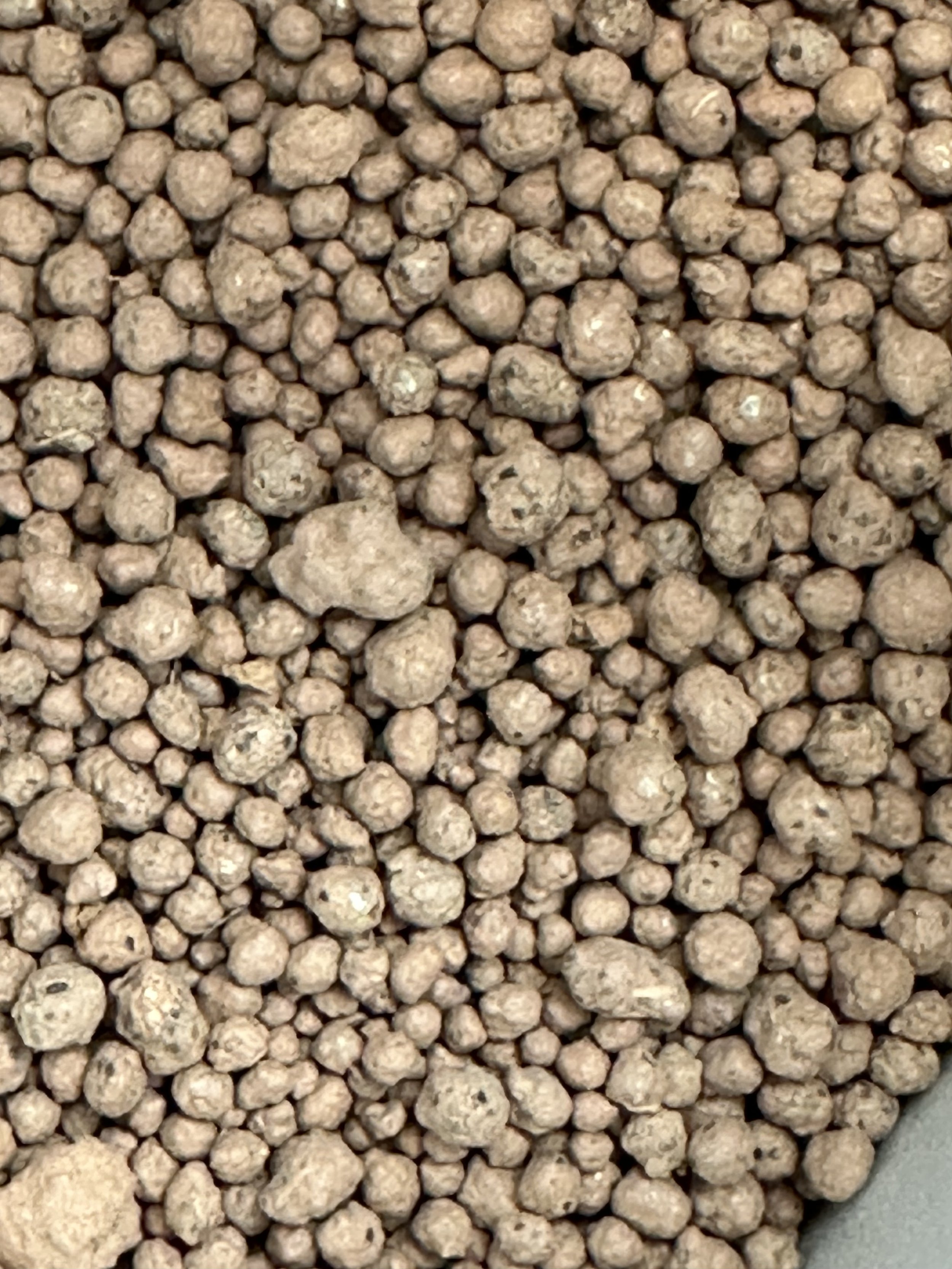Unlocking the Underground Magic: The Power of Mycorrhizal Fungi
I’ve recently been experimenting with different methods of growing what I can add to my substrates to improve the root growth as well as using Sea Weed, I’ve been trying out Mycorrhizal Fungi. As you know I like to research and be using it for a while before sharing my experience with something.
When we think about plant care, we usually focus on what we can see — leaves, stems, flowers, and maybe a bit of root pruning here and there. But beneath the surface lies a hidden network that has been quietly supporting plant life for hundreds of millions of years: mycorrhizal fungi. We all want our plants to have the best start and if the roots are happy the plants are happy. You may have seen them used in rooting cutting of Roses.
What is Mycorrhizal Fungi.
"Mycorrhiza" literally means "fungus-root." These are beneficial fungi that form symbiotic relationships with plant roots. In simple terms, they team up with your plant’s roots and help each other thrive. The fungi attach to the root system and extend their thread-like structures (called hyphae) deep into the soil, increasing the root’s reach dramatically.
Why Are They So Magical?
Let’s break down the benefits:
🌱 Nutrient Superhighways
Mycorrhizal fungi help plants access nutrients that would otherwise be out of reach, especially phosphorus, nitrogen, and trace minerals. The fungi absorb these nutrients from the soil and shuttle them directly to the plant roots.
💧 Improved Water Uptake
The extended network of hyphae acts like a sponge, helping plants access water from a larger area. This is especially valuable in dry conditions or for thirsty plants.
🛡️ Stronger Immunity
Mycorrhizal relationships can boost a plant's resistance to soil-borne diseases and environmental stress. They essentially help train your plant's immune system and fend off unwanted pathogens.
🌍 Soil Health Champions
These fungi play a major role in improving soil structure by binding particles together, creating better aeration and drainage. Healthier soil = healthier plants.
🌿 Carbon Exchange & Communication
In forests, these underground fungal networks even allow trees to “communicate” and share resources — often called the “Wood Wide Web.” While this may sound like sci-fi, it's backed by fascinating research.
Mycorrhizae and Houseplants: Do They Need It?
In nature, most plants form mycorrhizal relationships, but indoor plants often miss out. Sterile potting mixes, frequent watering, and isolation from natural ecosystems limit fungal activity. That’s why adding mycorrhizal inoculants when repotting or planting can make a noticeable difference in plant health, especially for slower growers, newly transplanted specimens, or stressed plants.
How to Use Mycorrhizal Inoculants
Powdered or granular: Sprinkle onto roots during repotting.
Liquid: Mix with water and drench the soil.
Pre-mixed into soil: Some high-quality potting mixes already contain beneficial fungi.
Note: Mycorrhizae don’t work as well in synthetic-heavy soils or with high-phosphorus fertilizers, which can inhibit the fungal growth.
Not All Plants Use Mycorrhizae
Fun fact: Some plant families — like orchids — have very specific fungal partnerships, while others (like members of the Brassicaceae family, including cabbage) don’t form mycorrhizal relationships at all.
How to Use Mycorrhizal Fungi in Your Repotting Routine
One of the easiest ways to introduce mycorrhizal fungi is during repotting. Just sprinkle a bit of inoculant directly onto the root ball, or mix it lightly into the soil near the roots. Water it in gently, and let the magic begin.
This is also a great time to streamline your plant care setup. We love using Jungle Floor Creative’s waterproof potting mats — not only do they keep your workspace clean, but they help you stay focused on the task at hand without making a mess. Pair it with one of our plant scoops, and you’ve got everything you need to blend soil, fungi, and love into every pot.
Whether you’re repotting on the balcony, kitchen table, or floor, these reusable tools help you stay grounded (and stylish!) while you work.
🌱 Pro tip: Avoid high-phosphorus synthetic fertilizers when using mycorrhizae — they can suppress fungal growth!
⚠️ Cons of Mycorrhizal Fungi
❌ They’re Picky About Conditions
Mycorrhizae don’t thrive in sterile, compacted, or overly wet soils. Excessive use of chemical fertilizers (especially high-phosphorus ones) can also kill or suppress them.
❌ Not Universal
Some plants (like brassicas — think cabbage, broccoli, etc.) and many carnivorous plants don’t form mycorrhizal relationships. Orchids, on the other hand, require very specific fungal partners.
❌ Takes Time to Establish
They aren't a quick fix. Benefits develop gradually as the fungal network builds — it’s a long game.
❌ Varied Product Quality
Some commercial inoculants may contain low spore counts or inactive fungi, especially if stored improperly. Always check the source and shelf life.
❌ Not Always Needed
In rich, living soil with a healthy microbial ecosystem, fungi may already be present. Inoculants are most helpful when starting fresh or working with poor/substrate-heavy mixes.
Final Thoughts
Mycorrhizal fungi aren’t just a scientific curiosity — they’re ancient allies. With the right tools, knowledge, and a little fungal magic, your plants can become more resilient, nutrient-efficient, and beautifully self-sufficient.
So next time you're repotting, don’t just think about soil and pots — think about connections. Beneath the surface, there’s a whole world rooting for your plants. 🖤
Featured Tools
🪴 Jungle Floor Creative Potting Mats – Durable, waterproof, and foldable. Designed for tidy, joyful repotting.
🪣 Plant Scoops – Because who has time to spoon mix soil by hand? These scoops make measuring, mixing, and sprinkling mycorrhizae a breeze.
I recommend Aqua Culture UK Dry Seaweed, Slow Release Fertiliser Soil Topper. This will work really well with Mycorrhizal as its organic and slow releasing like that of the Mycorrihizal to find out more about the benefits of sea weed check out my blog.
I use this type of Mycorrhizal started with a smaller bag and then now get a bigger bag













